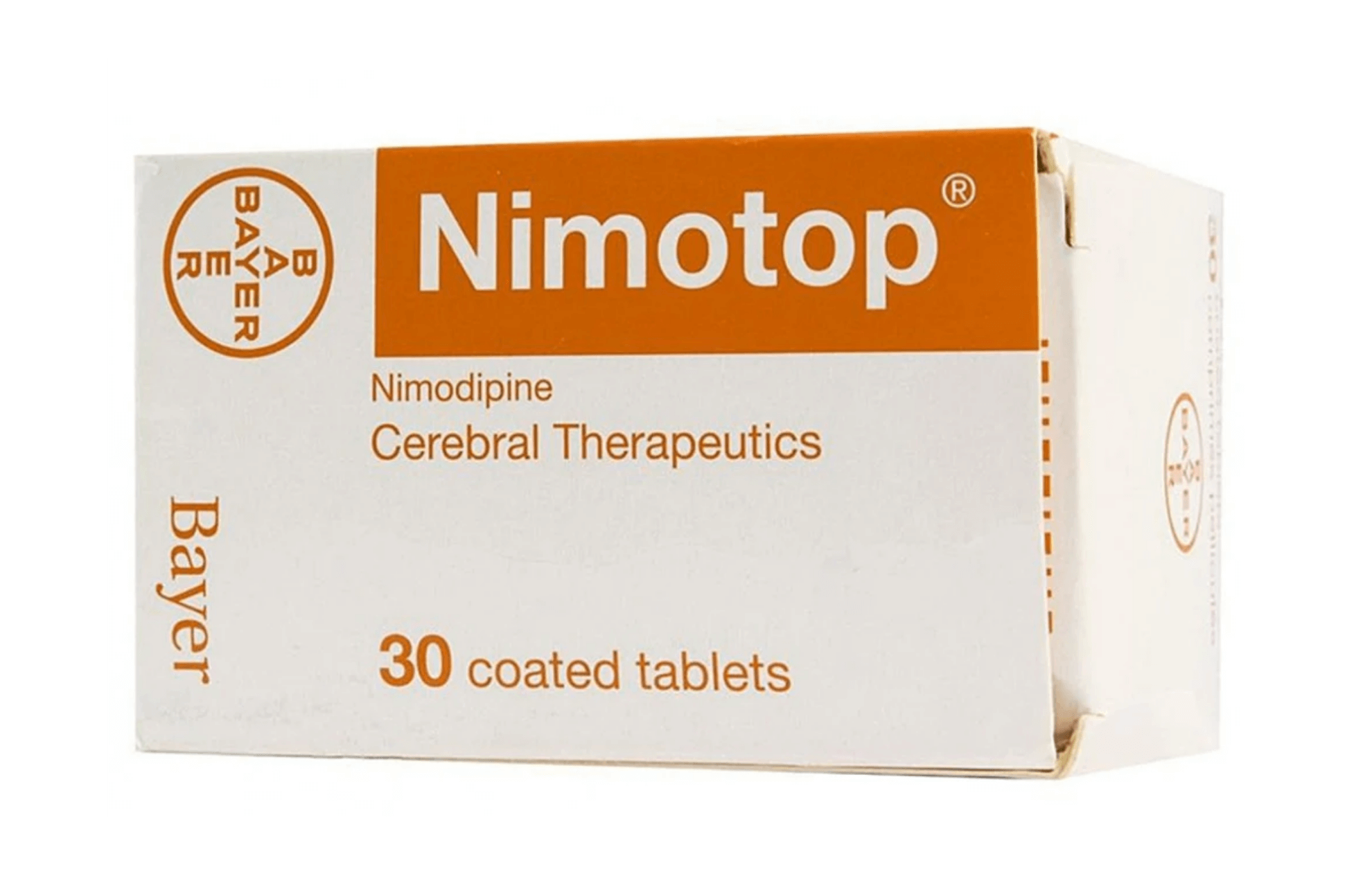Nimotop (generic name: nimodipine) is used to help protect the brain after a specific type of bleeding, known as a subarachnoid hemorrhage. This condition occurs when a blood vessel on the surface of the brain bursts and leaks blood into the area surrounding the brain. One of the serious complications following this event is the narrowing of nearby blood vessels, a condition known as cerebral vasospasm. This narrowing can reduce blood flow to parts of the brain and lead to further damage. Nimotop helps by relaxing these blood vessels, improving circulation, and lowering the risk of additional brain injury.
Nimodipine belongs to a group of medications called calcium channel blockers, which are typically used to relax blood vessels and improve blood flow. Nimotop mainly works on the blood vessels in the brain. Its selective action enables it to enhance blood circulation in this specific area without significantly affecting other parts of the body. By doing this, it helps reduce the risk of long-term brain damage following bleeding in the brain.
Nimotop has been in medical use for several decades and is considered a standard treatment in patients recovering from aneurysm-related brain bleeds. Its use is carefully supervised by doctors, often as part of a broader treatment plan that may include surgery and other medications. It is especially valuable during the early stages of recovery after a subarachnoid hemorrhage since it helps prevent the serious complications that can occur days after the initial bleeding event. It is not a treatment for the bleeding itself, but supports the brain’s recovery by reducing the chance of further injury.
Dosage
The prescribing doctors’ instructions must be followed precisely. Each dose should be taken at least 1 hour before or 2 hours after meals to ensure consistent absorption.
Important!
Do not drink grapefruit juice or eat grapefruit while taking Nimotop tablets. Do not start taking Nimotop tablets within 4 days of drinking grapefruit juice or eating grapefruit. Tell your doctor if you have had grapefruit or grapefruit juice in this time.
Storage
Nimotop tablets must be stored in the original packaging at 15–30°C (59–86°F) and should be protected from light and moisture
This text is for informational purposes only. Please consult a doctor or pharmacist before using any medication.
Read the information leaflet that comes with the medication.
If a sudden allergic reaction (anaphylaxis) occurs shortly after taking Nimotop, with symptoms like swelling of the face, tongue, or throat making it difficult to breathe or swallow, or there is wheezing, hives, rash, blistering, or peeling of the skin, call a doctor or 911 right away, or go to an emergency room immediately.
Most people who use Nimotop do not experience any adverse side effects. Doctors prescribe this medication because they assess the benefits of such treatment outweigh any likely unwanted effects.
Some of the side effects that have been reported include hypotension, headache, dizziness, flushing, nausea, diarrhea, and peripheral edema. Fatigue and palpitations may also occur. Less common reactions include jaundice and anemia.
Not all side effects are listed here. If these or other unlisted symptoms persist or worsen, consult a healthcare provider or pharmacist.
Nimotop is approved for the prevention of damage to the brain caused by cerebral vasospasm following aneurysmal subarachnoid haemorrhage (SAH). It assist in the dilation of cerebral arteries, mitigating delayed ischemia and improving neurological outcomes after SAH.
Nimodipine has demonstrated preliminary benefits in several off‑label areas such as acute ischemic stroke, where it may promote neurological recovery.













